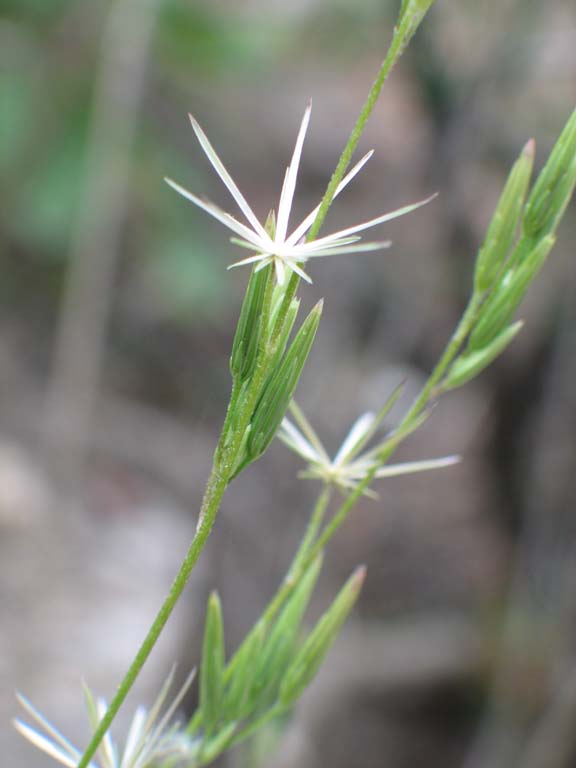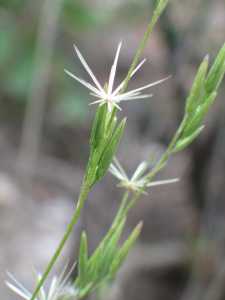Annuals, 10-100+ cm. Stems erect (round to 4-angled or -ribbed), unbranched or sparingly branched (from proximal nodes, puberulent and/or villous to pilose, often in lines, sometimes glabrate). Leaves mostly cauline; usually opposite (proximal often withering before flowering, distal sometimes alternate); petiolate; blades (proximal) 3-5-nerved, triangular to broadly ovate (bases obtuse to cordate), margins subentire to dentate, faces glabrous or sparsely villous (at least along veins and on margins), not gland-dotted. Heads discoid, in spiciform or narrow, ± paniculiform arrays (subtended by lanceolate to linear, scalelike bracts). Involucres cylindric, [2-]3-4+ mm diam. Phyllaries persistent (spreading in age), (12-)17-22+ in 3-4+ series, 3-nerved, lance-deltate or lanceolate to linear, unequal (apices acute to acuminate). Receptacles flat, epaleate. Florets 8-12; corollas greenish white to cream-colored, (bases slightly enlarged, tubes and throats not markedly differentiated externally) throats cylindric to filiform, lobes 5, triangular-ovate (very short); styles: bases not enlarged, glabrous, branches ± filiform (appendages linear or weakly clavate). Cypselae ± prismatic (usually 5-angled) or subcylindric, usually 5-ribbed, minutely puberulent; pappi usually readily falling, of 8-13 plumose bristles or setiform scales in 1 series (basally coherent or weakly connate, falling together or in groups). x = 10.




